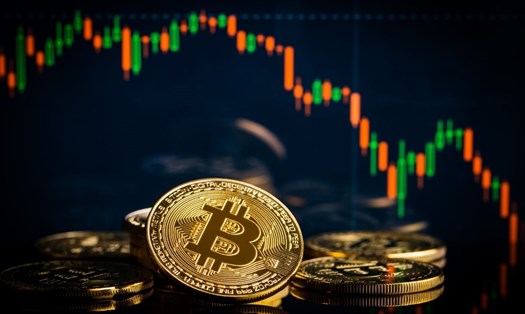Fed's decision overshadowed by geopolitical factors
The US Federal Reserve (Fed) cut interest rates for the second time by 0.25 points on October 29. The move is expected to help the risk market recover. However, contrary to expectations, the cryptocurrency market has shifted to a downward trend.
On October 29, Bitcoin (BTC) fell below 109,000 USD, while the Ethereum (ETH) fell below 4,000 USD, closing October at its worst in more than 7 years. The total value of the cryptocurrency market "evaporated" about 100 billion USD, dispelling the short-lived optimism.
Although the technical foundation shows a positive trend as monetary policy is loose, bond yields fall, and stocks recover, investors are still cautious, seemingly waiting for a bigger event than the long-awaited US-China trade deal.
The Fed lowered the benchmark rate to 3.75%-4%, its lowest level in 3 years, to stimulate growth and prevent unemployment from escalating. Instead of boosting the wave, the market reacted negatively.
Immediately after the announcement, Bitcoin decreased by more than 3%, in the context of President Donald Trump issuing a new nuclear testing warning just a few hours before the summit with Chinese President Xi Jinping. Normally, interest rate cuts will support cryptocurrency prices, but investors are clearly hesitant until there is a clearer signal about US-China relations showing that global politics, not just the Fed's policies, are dominating the market.
Trade agreements bring a ray of hope but not enough
The meeting between President Donald Trump and Chinese President Xi Jinping later in the day somewhat reassured his psychology.
The two sides reached a one-year trade deal focusing on rare earths and strategic minerals, and partially lifted tariffs, the report said.
According to the White House's statement, the US agreed to reduce some import tariffs, in return China committed to increasing rare earth exports and reviewing technology transfer regulations.
This information helps the cryptocurrency market recover in the short term. Bitcoin increased by 2,000 USD, from 108,000 to more than 110,000 USD. Several other major currencies have also increased, but the recovery momentum is quickly lost as investors are skeptical about the viability of the deal and lack of long-term commitments.
The cryptocurrency market cautiously enters November
History shows that November often has low liquidity and unpredictable price movements.
Although institutional capital flows remain stable, retail investors are hesitant between the Fed's loose monetary policy and geopolitical risks.
Currently, Bitcoin is still held below an important resistance zone, showing that macro factors alone are not enough to reignite risk appetite.











